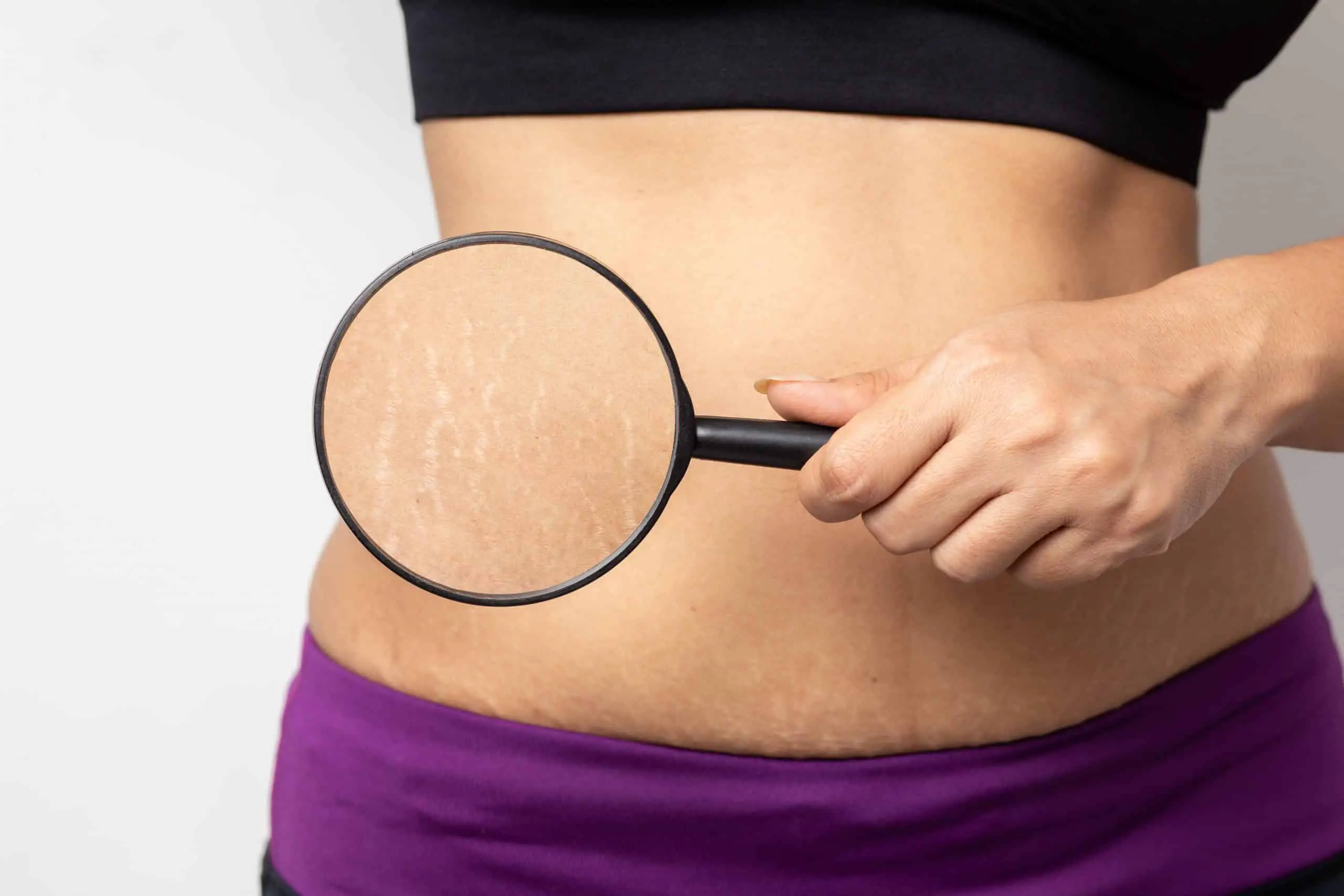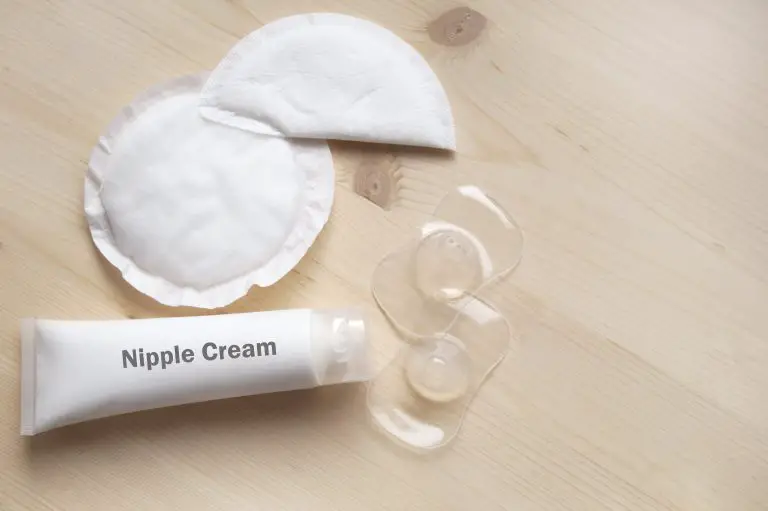Everything About Stretch Marks During Pregnancy
The irritating effects of stretch marks are inevitable unless you take the right steps to prevent them in the first place. Effects caused by stretch marks on the skin during pregnancy include
- Darkened scars
- Blotchiness
- Irritation
- Sore and dry skin
- Wrinkles
- Bumpy streaks
- Uneven skin tones, etc.
When stretch marks begin to emerge, the skin turns pale and thin. They initially develop as wrinkly, raised streaks that can be purple, red, reddish-brown, or dark brown, depending on the skin color. They are best prone to develop on abdomen, breasts, hips, flank, buttocks, thighs, calves, arms, and on fleshy parts of a body.
Stretch Marks are not physically dangerous however they cause anxiety and serious discomfort. Furthermore, itchiness, blotchiness, dryness, and scarry patches/streaks on the skin which are common effects of stretch marks can significantly and negatively affect a woman’s skin and body health.
Stretch marks are also called striae, striae distensae (SD), striae atrophicans, and striae gravidarum.
How and Why do the Stretch Marks develop?
Between 50 to 90 percent of women who are pregnant experience stretch marks during or after birth.
A human’s skin consists of three key layers:
- The epidermis or the top layer,
- The dermis or the middle layer, and
- Subcutaneous or the bottom layer.
Stretch Marks form in the middle layer, when the connective tissue is stretched beyond the limits of its elasticity. This is normally due to the rapid expansion or contraction of the skin.
The rapid expansion of skin occurs in cases of obesity, puberty, and in pregnancy. If the body grows slowly, the connecting fibers in the dermis can accommodate slow growth. But if the skin grows rapidly, the dermis can tear and affect the other two layers of skin.
Consequently, the bottom layer of skin becomes visible as the middle layer tears and damages while the top layer starts to become pale, weak, and thin. This process contributes to how the stretch marks look.
Stretch Marks eventually fade into a silvery, white, or glossy appearance. This is due to the pale fat present beneath the skin which becomes visible instead of the usual blood vessels.
But fading of stretch marks takes a lot of years so it’s best to prevent them in the first place. To prevent them, you must be knowledgeable of how and when they occur so you can take the right measures to treat their root causes.
1. When do stretch marks occur in pregnancy?
Stretch Marks start to develop when a mother-to-be is around 6 weeks to 13 weeks of pregnancy. Up to 90% of all expecting mothers develop these pink, red, tan, purplish, brown streaks on their fleshy parts of the body. You’ll most likely notice them across your belly, butt, thighs, hips, or breasts.
Stretch Marks and scarring happens when the skin cannot resume normal form after a period of intense growth, often due to pregnancy,
Main Factors associated with Stretch Mark development on the Skin
1. You are Young and Expecting
Youthful skin is firm and is more vulnerable to dermis damage during sudden skin expansion. As skin matures, it naturally begins to lose firmness, so it doesn’t have to stretch as much to account for your growing body. If you are young and have a firm, toned and taut body and you are expecting a baby at the same time then you should prepare for the stretch marks arrival. A body’s elasticity is crucial to accommodate rapid growth. But nonetheless, there are ways to prevent it, so before they start to appear, get a tight hold on them, dear girl!
2. Your Mother had them
Genetics plays a role here. If your mother had stretch marks during or after pregnancy, chances of you having them are great. It is due to the state of elasticity in the skin which is present or absent naturally. In order to support speedy growth, the skin must be flexible and have enough elasticity in order to avoid dermis damage.
So if your skin genetically lacks elasticity, then it is a sign that you may develop the scars and stretch marks around 6 weeks into pregnancy.
Another genetic factor that contributes to the increase in the risk of having stretch marks is when you have certain genetic disorders. Cushing’s Syndrome, Marfan Syndrome, Ehlers-Danlos syndrome, and other adrenal gland disorders are two of the main genetic disorders which greatly increase the likeliness of having stretch marks on your skin. These disorders increase the levels of cortisone in your body which eventually leads to greater chances of having stretch marks.
3. You are Obese or Overweight
Being overweight or obese means there is more fat on your abdomen, breasts, hips, thighs, calves, and arms. Your skin is already going through changes and when the skin changes during pregnancy kick in, you are more likely to have marks on your skin.
4. Color of your Skin
The appearance of stretch marks also depends on the color of your skin. If your skin has a lighter complexion and if you are pale, the stretch marks will be more visible. When the dermis breaks and stretches and causes these marks, they are more visible on the skin with a lighter tone. If you have a darker skin tone, then the appearance of these marks will be lighter. Keep in mind, that this is just the appearance of the marks on the different skin tones, the intensity of the marks and the time it will take to completely get rid of them stays almost the same.

2. When to start using Stretch Mark Cream During Pregnancy?
It is always better to prevent stretch marks than rather cure them. If the skin areas that are prone to stretch marks are cared for and nourished before the stretch marks finally appear, it is very likely that they would be prevented.
According to many researches, 9 out of 10 mothers get stretch marks and they can very well be prevented. Stretch Marks can also be prevented on skins that are genetically prone to stretch marks.
In the end, it all depends on the care you put towards the prevention process; caring for the skin, using creams, oils, moisturizers, and other methods.
Stretch Marks appear around the sixth month of pregnancy, but it is best if the preventions start before that time; around the mid of the fifth month. From the sixth month onwards, the skin starts to lose its elasticity, and collagen and elastin (skin fibers that keep the skin layers intact) start to lose their stretchability; finally snapping and causing the Stretch Marks. They are due to rapid changes in the middle layer of the skin, that is why the marks are not like the exposed scars, but light pinkish or brown in the beginning.
The most perfect time to moisturize and nurture your skin is before these pinkish-brown streaks start to appear. That is the absolute ideal time. It is still possible to treat the marks when the streaks start to turn red, but best it is if prevention starts before that. Once stretch marks attain a whitish complexion, it is just too difficult to get rid of them. Lack of proper preventive methods and other reasons can lead to the marks turning whitish and being there, to stay…
Using creams, other moisturizers, oils, and lotions on the areas that are prone to stretch marks in the first and second trimester give the greatest results. The belly, the lower back, the breasts, and the hips are most likely to experience the marks. After a nice bath, use a nice stretch mark cream on the nearly-dry skin and make sure to properly and nicely massage these areas. These moisturizers help in maintaining the elasticity of your skin and greatly reduces the chances of the rapid skin breakage when the body is expanding. It is known that natural oils perform wonders on the skin and give exceptional results. Make moisturizing your skin, a part of your daily care routine. Another tip that is recommended by many doctors and dermatologists is to slowly put on weight. Keeping in sync with the new growth and routine while slowly and consistently putting on a little mass healthily will help a lot, not only with stretch marks but also with your overall health.
During the second trimester, you would see a great improvement in the skin texture and health if you are consistently exercising all the preventive measures, and taking super good care of your skin. But, if for some reason, you still feel that the new scars can be reduced, then do not worry! It is absolutely possible to completely control the marks now to the third trimester. If the pinkish-brown streaks turn red, you still have a pretty good chance of controlling them. Just keep on being strong during this period and be consistent and thorough with your stretch mark prevention routine.
When the baby finally comes, postpartum skin changes will leave the skin very soft and loose. This will make the stretch marks more visible on the skin. Try adding a skin tightening serum now along with your moisturizing or oiling routine to support and make the skin cared for. If using any kind of serum, make sure that it is derived from the most natural ingredients. An example of such a natural skin-tightening ingredient is Centella Asiatica.
With proper care, the post-birth stretch marks should now have turned very light and would have faded greatly. The remaining marks on the skin can now be controlled through the same preventive measures; moisturizing or oiling. Since the pregnancy period has ended, it is safe for you to use creams with retinoids and other Vitamin A supplements.
If the stretch marks still continue to be stubborn and are taking forever to fade away, and if topical treatments and all the other measures are not working, then laser treatments are an option. Safe treatments, like pulsed dye laser treatments, are known to improve the appearance of the skin with stretch marks. This is considered a safe option even during nursing, but it is important to consult with your doctor first.
Though Stretch Marks are not a serious health concern for a mother at any time; during or after pregnancy, many complications can arise. Stretch Marks when starting to appear can cause skin irritation, dryness, and other kinds of discomforts. The skin and the body deserves to be cared for properly and preventive measures should be taken. It is good to embrace your stretch marks proudly; as a part of yourself. But only when all preventive measures don’t do the trick. After all, it is a natural process and is unavoidable in nearly every pregnancy. It is good to love yourself, and love all that you are and will be!
Embracing your Stretch Marks
Though stretch-marks are widely considered unpleasant and as something that induces insecurity in you, you must remember that a stretch mark is also a beauty mark. It’s your baby leaving a mark on you before it even sets foot on the Earth. Every process has an effect and so stretch-marks occur as you get pregnant. It’s a sign, it’s a greeting remark. Embrace it with your heart!
If you have stretch-marks on your belly, thigh, or on arms, it really proves that you are able to go through changes. It shows that you are living your life completely and embracing everything that’s coming along with new experiences of life.
Stretch-marks are a reminder that you can survive big changes; physically and both mentally. No matter how different they look from the even-toned and glowing bodies of those women in Media, your scars and stretch-marks show your strength and blossoming growth. And so, they are the beauty marks that you shall embrace with your heart. It’s completely okay to rub oils and creams on them to prevent them as a part of skincare routine but hating them will not do you any good at all.
You can drink more water and keep yourself hydrated and moisturized so that these scars or stretch-marks do not cause you pain and complications, this can truly be a part of your everyday skincare regime. However, if you start to abhor them and feel insecure because you perceive them as ugly and different, then my dear you need not do so. As a consequence, you will only lose your glow. Remember that a body with moisturized stretch-marks can still glow and look healthy but worrying, insecure, and anxious skin can never appear healthy regardless of it having marks or not.
You are not alone
Nearly every woman goes through the same during or after pregnancy so we all are in this with you. Let’s learn to embrace these natural beauty marks with a gentle and a better caring heart.


